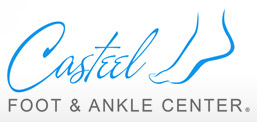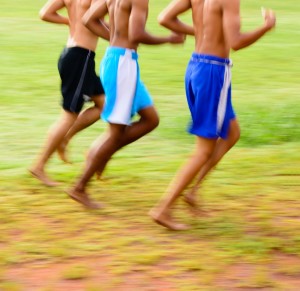Have you ever thought about kicking caution to the wind and engaging in minimalist training? Barefoot rehabilitation, although still a relatively new methodology, is slowly gaining momentum around the country (even within the podiatrist community) as a key element to proper health and physical development.
Going Barefoot in 2014?
If you’ve ever seen someone running on the beach without their shoes on, it typically isn’t because they like playing in the dirt (although, who doesn’t enjoy a little sand between their toes). Case studies have found that running efficiency does increase by 4% for those who choose to ditch the footwear. But, it’s not all about performance, either.
Here are just some of the other ways that going “au naturel” benefit the body (according to a podiatry industry study):
- Strengthens muscles, tendons and ligaments inside the foot and ankle
- Helps with stretching of the calf muscles and Achilles tendon, reducing injuries
- Improves balance and coordination
- Increases ankle mobility
- Encourages proper running technique
- Improves posture
Despite the proven benefits, however, there are things your podiatrist would caution that you keep in mind if/when transitioning to barefoot training. No method is foolproof! There are always risks involved with any style of training or physical rehab. Do your homework, know the potential vulnerabilities ahead of time, and use your podiatrist as a barefoot training resource, should you have any questions or need any additional information.
Any podiatrist will tell you that the most crucial aspect to adopting the minimalist approach is to make the transition gradually. The body takes time to adjust, and the rule of thumb with any new exercise is always start slow and build up progressively (doesn’t matter what type of training you’re engaged in or at what level you are). There is greater potential for injury if you don’t transition properly.
So, what are the steps to making a successful transition? Here’s a guide (put together by Dr. Casteel’s podiatry clinic here in Rowlett) to help you get started:
First 6 weeks:
- Mobility exercises: start with ONLY your warm up barefoot (better to do inside a gym or on a softer surface).
- Always have shoes off when you’re in the house or outside.
- Work on repeatedly balancing on each foot for a minute at a time.
- Find yourself a nice pair of minimalist shoes (specially crafted shoes with little to no sole), and start wearing them everywhere.
- If you incorporate strength training into your routine, begin doing some single leg exercises and deadlift variations barefoot (or with minimalist shoes). Start with a lighter weight until you get comfortable.
After 6 weeks:
- Start with light jogging barefoot (1 minute each day the first week and then increase by 1 minute each subsequent week).
- Keep the pace nice and slow in the beginning and work your way up (similar to the 1 minute/1 week arrangement).
- Work on proper form during mobility exercises: land on the ball of your foot every time (forefront of the foot should always come first). Be aware, the faster you run, the more pressure you put on the Achilles and calves. So, allow the body time to acclimate!
Contact Casteel Foot & Ankle
Our Rowlett podiatrist is currently accepting new patients. Should you have any questions or need some additional information, please contact Casteel Foot & Ankle Center to schedule an appointment.
Our clinics are conveniently located in Rowlett and Royse City. To schedule an appointment please call 972-412-4449.

